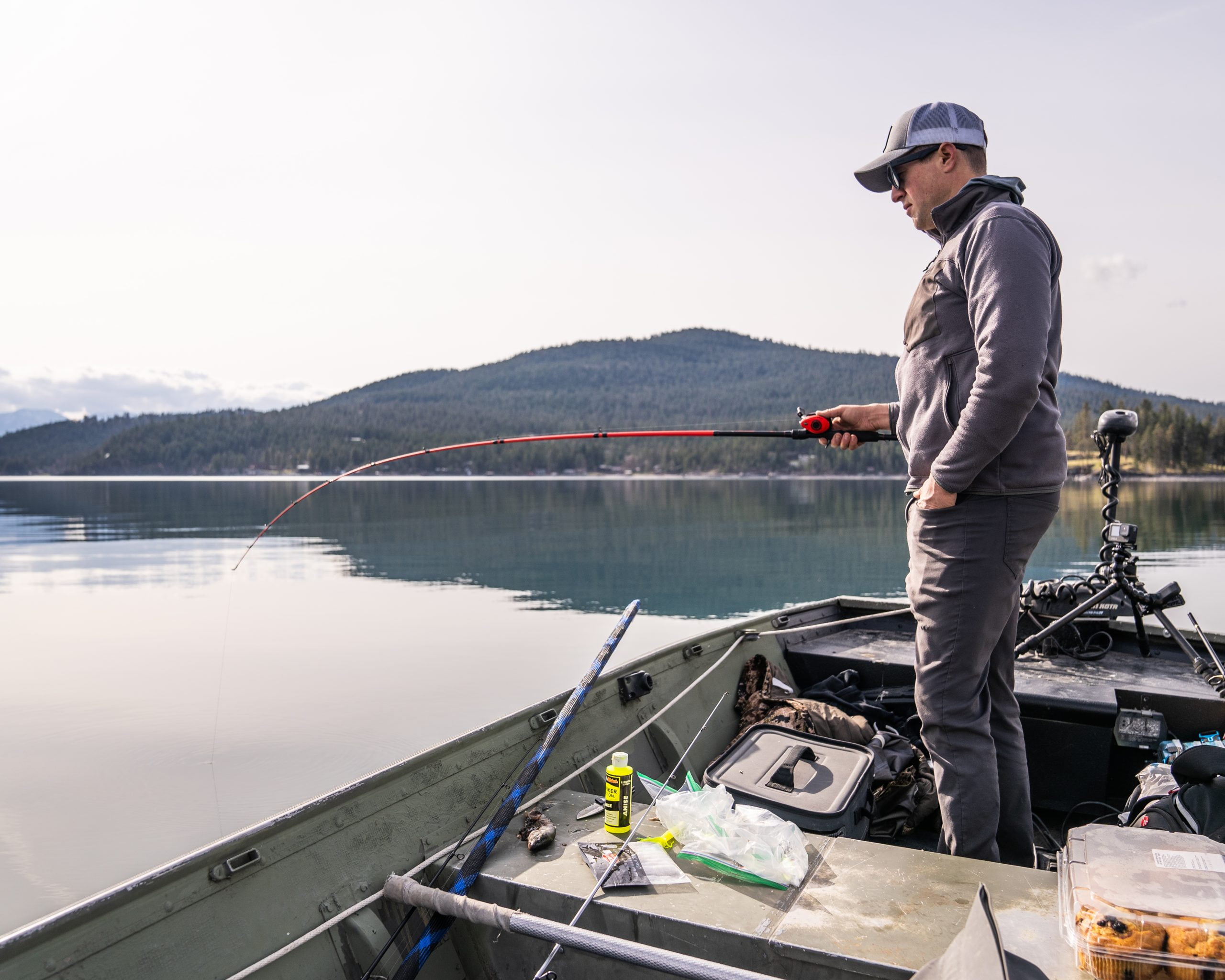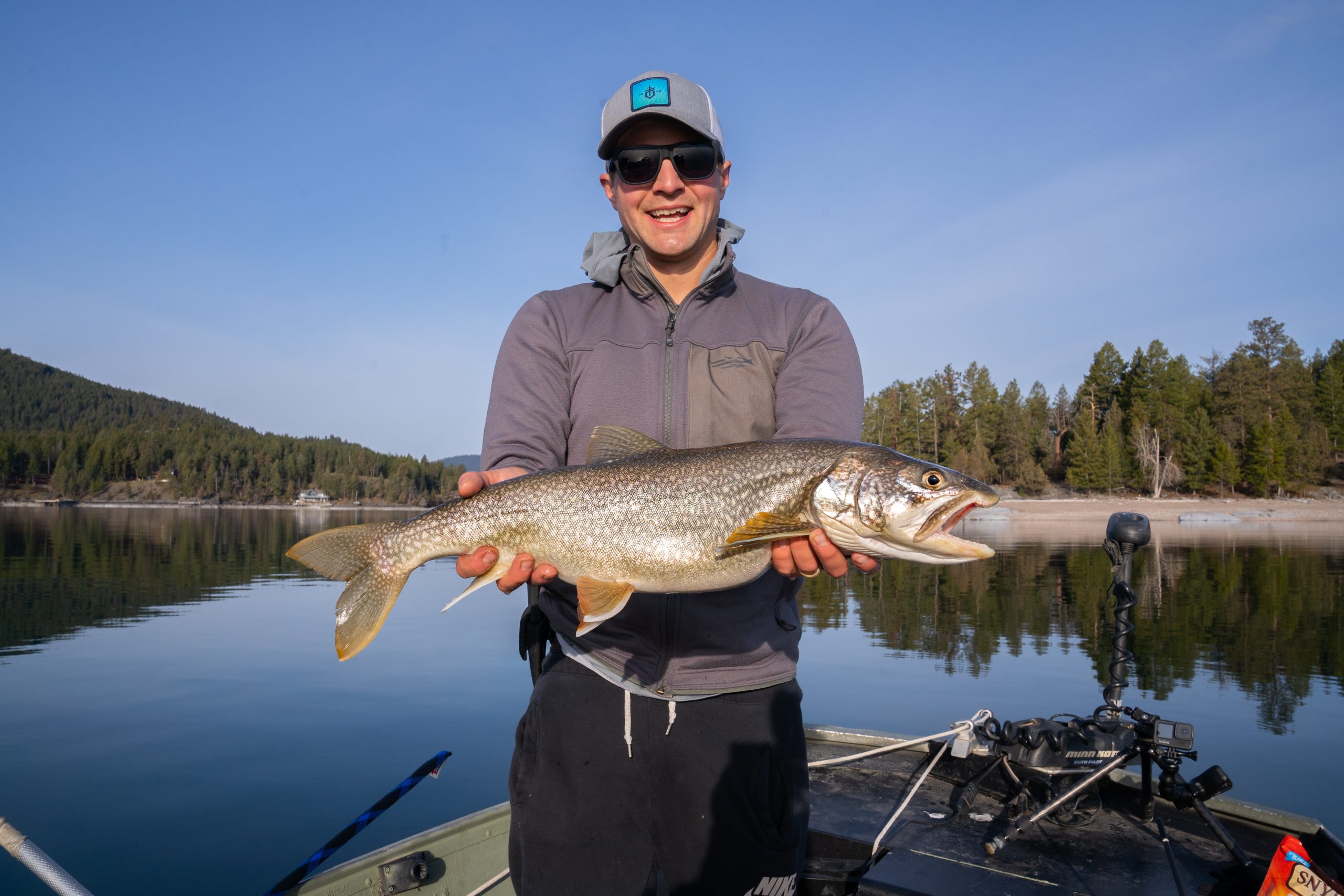Lake trout might not be the first species you think about when it comes to Montana, but there’s a lot of opportunity if you know how to get after them.
In 2022 I spent quite a bit of time fishing for lake trout in the Big Sky state. These fish are pretty tricky, and there was a learning curve for me. With that in mind, I want to talk about the gear and strategies that will help you land more lake trout in Montana.
Note that I’m talking about ice fishing or open-water fishing with a rod and reel. Downriggers and high-end boats are not covered in this article. All of the fishing I’ve done for lake trout has been on the ice or out of my 1988 Jon boat.
Michael’s Top 3 Tips For Landing Montana Lake Trout
Use Electronics To Find Lake Trout

Electronics are a must in my opinion. If you’re chasing these fish on the hard water we drill holes off of main lake points from 20-80 feet of water and fish each hole. If there are no fish showing up on your electronics, then it’s time to move on.
It’s important to know if there are fish in the area. For open water, it’s the same thing. It’s really hard to know what depth you are in without electronics. And water depth is really important for Montana lake trout fishing.
I like the Humminbird Helix series of electronics because they work for both hard water and open water. Marcus likes the more budget-friendly Garmin Striker series. They both work really well, but the Helix offers more options across the board. And I prefer the bigger screen for open-water fishing on my boat.
Practice Your Vertical Jigging
For the most part, vertical jigging is the name of the game when you’re lake trout fishing. These fish like cold water; this often means that they live in deep water. Sure, there are times the year when you can find them shallower, but most of the year you will find these fish in depths of 30-100+ feet. In order to effectively fish at these depths, you need jigs or spoons that are heavy enough to get to those depths quickly as well as heavy enough to feel at deeper depths.
We used lures ranging from 1-3 oz, with a 2oz handmade jig from Zimmer Tackle being our favorite. We tipped those jigs with cut bait as well. It’s important to also use either a fluorocarbon line or a braided line because monofilament lines stretch too much when jigging that heavy of weights. I personally like to use a 30lb braid with a 6-foot 12-lb fluorocarbon leader. I attach the fluorocarbon leader to the braid with a FG knot but there are many braid to fluorocarbon knots out there. Get to know one and use it.
For rods and reels, a medium heavy is the rod of choice. Reels don’t matter that much as long as they’re not complete garbage. Some places have GIANT lake trout, you may want to think about upping your reel in those areas. I used Diawa’s Crossfire LT rod and reel combo, and I landed some big fish with it.
Topography Can Help Locate Lake Trout

Lastly, if you don’t have access to a boat and want to fish from shore — heck, even if you do have a boat — it’s a good idea to have mapping for what lies below the surface.
Lake trout relate to specific water depths, so having a map of the lake that you plan to fish is a game-changer. When fishing from shore, I would suggest finding areas where there is a steep drop in depth that you can cast to. If you own a boat or have access to one, know that main lake points are really popular for lake trout. Find those main lake points that jet out into deep water. That’s an excellent starting point.
We use Navionics to find these areas. I personally like this mapping service because we can use it on our phones, create waypoints, and it doesn’t break the bank. In our experience, the maps are very accurate.
Final Thoughts
If you’ve been contemplating scratching the lake trout itch, go do it. They live in spectacular places and are very rewarding to catch.
If you decide to head to northwestern Montana, I highly recommend stopping in at Zimmer Tackle in Ronan, Montana and stacking up on gear. They’re great people with a lot of great products specific to that area.
Hopefully, these tips help you find and land more lake trout. Good luck out there!





